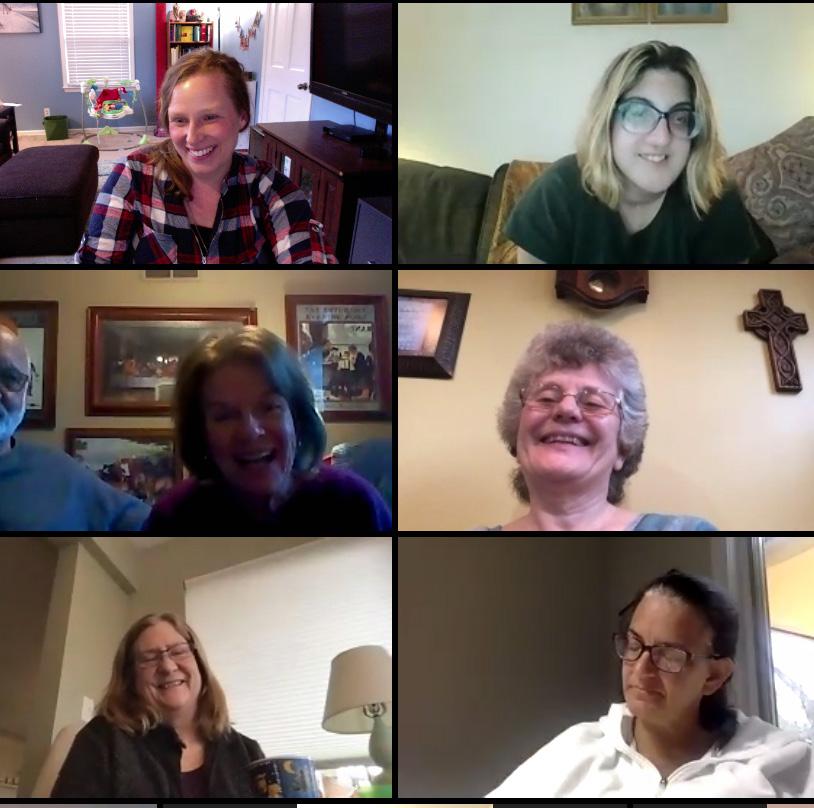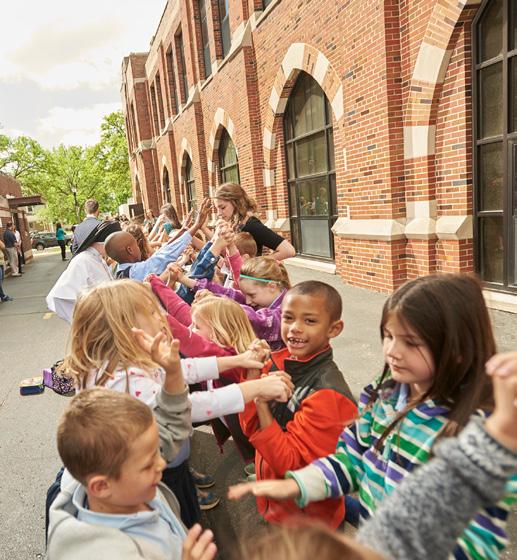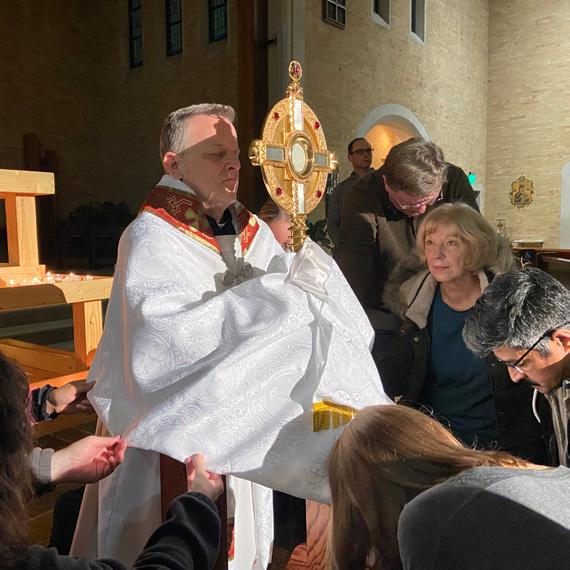EDUCATING FOR
DISCIPLESHIP JACOB ALLSTOTT
A
t Resurrection School, we strive to partner with our parents to form the next generation of disciples of Christ who seek virtue and a love of learning. To achieve this lofty goal, we have begun to draw deeply from the sources of the Catholic liberal arts tradition in ways that help our students develop wonder and curiosity for the created world. This approach is imbued with a virtue curriculum, developed by the Sisters of Mary, Mother of the Eucharist. Education in the virtues helps students to know not only when they are doing something wrong, but more importantly, it gives them a desire for what is good, true and beautiful. This type of integrated learning is enabled by our liberal arts curriculum. For example, we have a combined History and Religion class which allows for a greater illumination of theological truths and their application in ecclesial life. Similarly, Math and Science are paired so that students can apply the mathematical skills they learn and better come to know the coherence of the created order. But a coherent understanding of our world would be incomplete without a deep formation in discipleship. In addition to Mass three times a week, participation in Catechesis of the Good Shepherd, and opportunities to grow in holiness, one of my favorite aspects of our school’s spiritual formation is education in the healing power of prayer. Our students carry spiritual and emotional hardships just like the rest of us. Prayer for healing takes place most often within the normal
“A coherent understanding of our world would be incomplete without a deep formation in discipleship.” context of the school day, but students have additional time for prayer during our Advent and Lenten retreats. These retreats are held during a school day and include Mass, guided prayer, sometimes healing prayer led by the parish’s healing ministry team, a presenter, and a service project. For one of our Advent service projects, students wrote letters to those in prison, putting into action one of the Works of Mercy. The feedback we received from those letters was deeply moving. Our spirit-filled familial culture is also noticeable from the moment we start the day at our morning assembly. Students learn about a saint of the day before praying together our Shamrock Pledge. This pledge serves to order everything that we do: our academics, virtue education, spiritual formation, and family culture, towards the two greatest commandments: love of God and neighbor. When I step back and consider what God has done at Resurrection School, I am filled with awe and reminded of the debt of gratitude that my own family owes to Catholic education. In Proverbs, we hear that “a good man leaves an inheritance for his children’s children.” This is fulfilled in the partnership between Church and family through the gift of a Catholic education. Although I did not attend a Catholic school, I received that inheritance when a Jesuit priest responded to my








